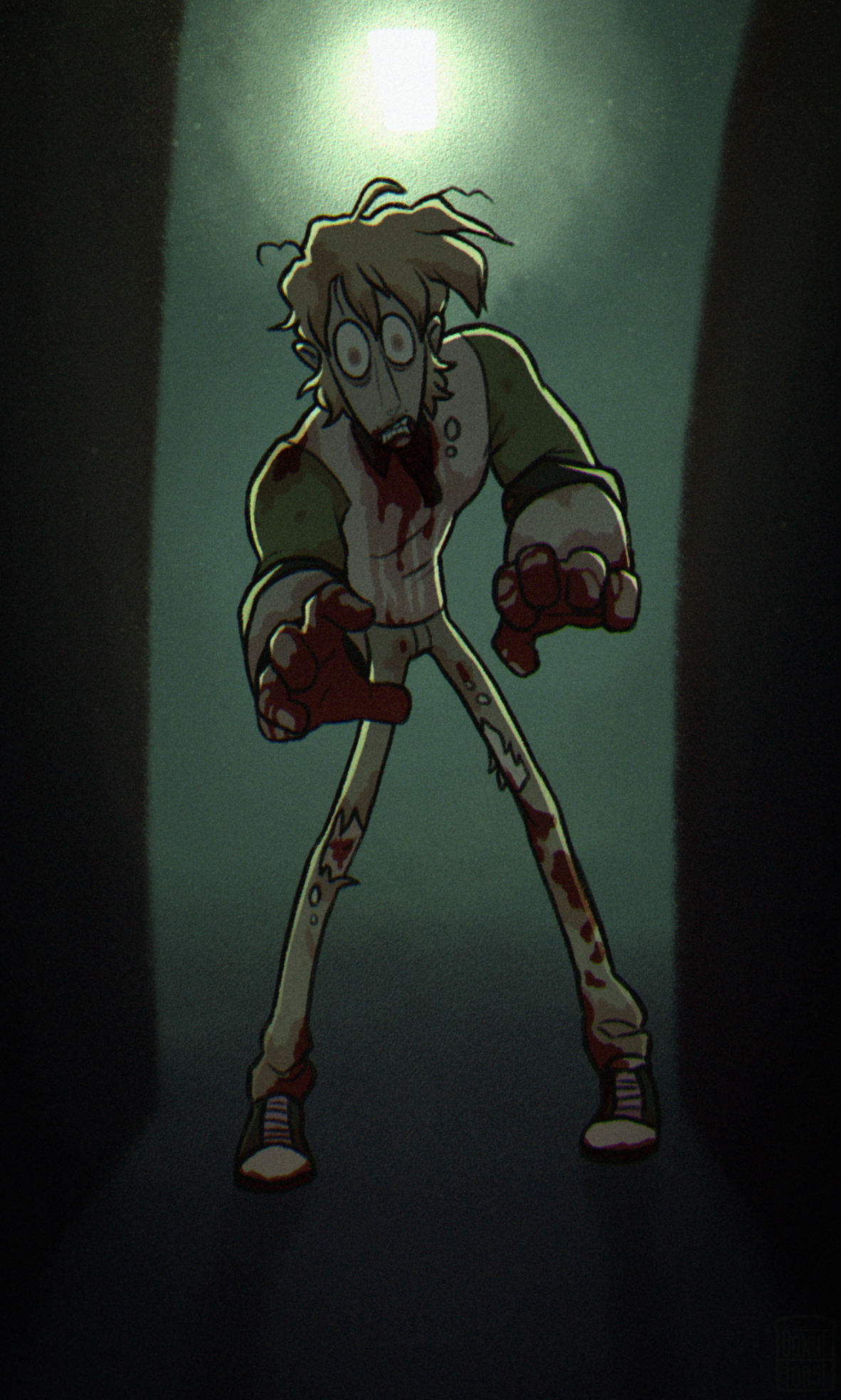Kin - Supernatural Development
Here's a collection of development I've made on several supernatural species present in the universe of Kin. In the Kin universe every mythical being, cryptid, or supernatural with other origins has existed at some point. Whether that is in the past, present or future... Every single one is canon at some point! Society has changed and morphed around these species too and in the present day adapted for most humanoid species to live a modern life amoung humans. Several new religions have sprouted too in this society, which I hope to develop more in the future! For now, Enjoy reading!
General Scientific Information
Brief History of Cryptozoology
Scientific research on these various cryptids only just started being taken seriously in the early 1950's. Before the 1950's human chimeras were largely villainized and not seen as part of the homo sapiens family. The studying of cryptids was finally given the name Cryptozoology and human chimeras started being categorised as Homo Sapiens Monstrosus. Later the scientific name of human chimeras was changed to suit each subspecies of human and the term H. S. Monstrosus is no longer used in modern times by professionals. These days each chimera has their own scientific name.
Major or Minor?
Chimeric cryptids are biologically categorised by how complicated of a chimera they are. Cryptids who exist out of 2 different species are categorised as Chimera Minor (minotaurs, satyr, werewolf, merfolk). If said cryptid exists out of 3+ species it is categorised as Chimera Major (Chinese long, Jersey Devil, Chimera, Squonk, Vallshull). Chimera Minors make up the majority of chimeras.
The more species a Chimera Major exists out of, the more likely it is to be born intersex. A Chimera Major that exists out of 8+ different species is called a liber, of which there are very few.
Chimera Classifications
Hominid (human) chimeras are also categorised with another layer above the Major and Minor categorization: How human do they appear and how human are they mentally?
The top row questions the appearance of said hominid chimera and the left row questions the mindset.
| Human Chimeras | Mostly human | Partly animal | Half blood | Partly human | Mostly animal |
| Human mindset | clear humanoid | clear ferinoid | sub hominal | clear primic | clear bestial |
| Mixed mindset | tame humanoid | tame ferinoid | Homalic | tame primic | tame bestial |
| Animal mindset | feral humanoid | feral ferinoid | sub faunic | feral primic | feral bestial/panmanic |
Genetic Disorder, Chronic Illness or Species?
Interestingly, there are also a handful of diseases that heavily alter one's appearance, behaviour and/or DNA. And interestingly, in DNA altering cases, traces of other species that weren't prior part of the morphology of said being have been found. But do these diseases turn these individuals into a different species? no. Socially they might be considered a different species or part of an established species, but biologically they are not. This is mainly referring to cases such as Vampirism, Lycanthropy and Zombification. The topic is rather complex... However, it is commonly agreed on that, until more definitive answers on Vampirism specifically can be made, an infected individual can be classified as a Chimera Major/Minor and be categorised under more specific hominid chimera categories.
Lycanthropy is a disease carried by most werewolves/lycans. It is transmitted through saliva, but only takes hold when inserted directly into the bloodstream. This causes the infected to gain lycan-like features such as long bodily hair, elongated canines and nails, snout-like features and pointy ears. Despite gaining similar features, there is still a distinct difference between a born werewolf and a bitten "werewolf". If the infected individual was a human, they would still biologically be deemed human (but one with lycanthropy.)
Example of a lycanthrope and and individual with lycanthropy:


Zombification is the process of an individual perishing at the hand of a parasite called the zomioebe, which strips the individual of all thought, personality and conciousness (considered death) while keeping the body animated and functional long enough to feed, thrive and spread to other individuals. Zombification is the most clear example of an infected individual not becoming a different species, as there is no such thing as a "born" zombie. An infected individual is biologically still the same species they were before they were infected, despite socially being considered a different species by many.
Example of Zombification:

Vampirism is more complicated and the topic of whether a born vampire is the embodiment of vampires as a species or also an infected individual, is still debated by scholars to this day.
An individual who is born with vampirism and has a family lineage of "True Blood" (born) vampirism, does not seem to have the same ailments as individuals who were infected later in life or were born to a parent who was infected later in life, such as bone fragility, sun sensitivity, severe anemia, dental problems and lasting damage to prolonged mental strain induced by blood lust. True Blood vampires also seem to have better sight and sharper incisors/canines. So due to these features, scholars would argue true blood vampires could be categorised as a different species, even if biologically they almost completely resemble individuals of "the same species" without vampirism. Despite the difficulties behind "True Blood" individuals however, officials agree that individuals infected later in life with vampirism, are still very much biologically the same species they were before they got infected.
Example of a True Blood individual and an Infected individual: (note the fangs)


Reproduction
To put it simply, no. Not all chimeras with a smidge of Homo Sapiens in their DNA can reproduce with other chimeras with a smidge of the same. In fact, there seems to be an interesting interspecies reproduction barrier between species that partake in hominid societies and those who don't. Although miscarriages and offspring with infertility seem to be a bit more common among interspecies relationships within society, they can reproduce with someone who is not of the exact same species. Whereas chimeras who don't participate in hominid societies, can only reproduce with those of the same species. It is also illegal world wide to attempt to court a hominid (or other) chimera of a species that does not participate in a hominid society. (Meaning: don't fuck an animal please I beg of you)
Evolution
Cryptozoologists are still not sure how chimeric cryptids came to be and why there are so many of them roaming the earth, but they do know it started somewhere in the paleogene period. Chimeric cryptids since then have evolved to look and function more like their own being rather than having a straight line of what was once part of another creature. Many of these cryptids have also evolved to have unique features of their own not seen by the creatures they evolved from.
Author's Notes
I've spend hours searching for terms that could solidly describe the level of part human I mean that I had to resort to making my own words,
Ferinoid: derived from humanoid and ferine. ferine is another, older word for fauna.
It's a word to describe human chimeras who are 1/4 animalistic.
Sub hominal: derived from hominal. hominal means to have humanoid features
It's a word to describe human chimeras who are slightly more human than beast
Homalic: derived from homo sapiens and animalia.
It's a word to describe a perfect physical and mental balance between the human and animal part of said chimera.
Sub faunic: derived from fauna. Faunic means having animalistic features.
It's a word to describe human chimeras who are slightly more beast than human.
Primic: derived from primate and animalistic.
It's a word to describe human chimeras who are 3/4 animalistic.
Panmanic: derived from the greek god Pan and manic. Pan is the god of the untamed wild and sexuality.
It's a word to describe human chimeras who live, look and think like wild animals.